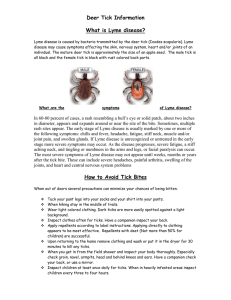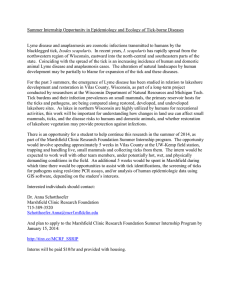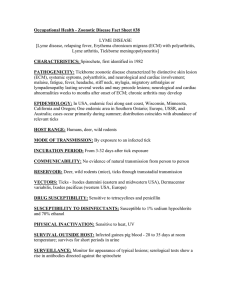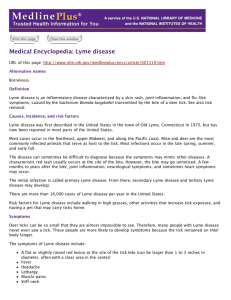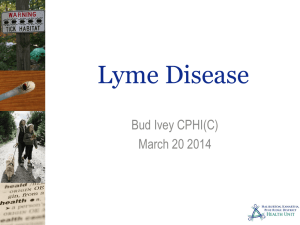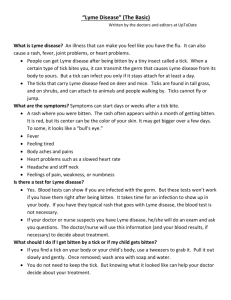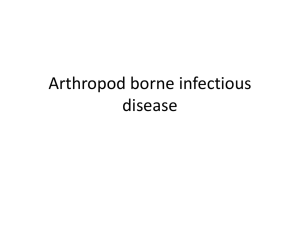Predicted areas of higher risk for lyme disease exposure and
advertisement
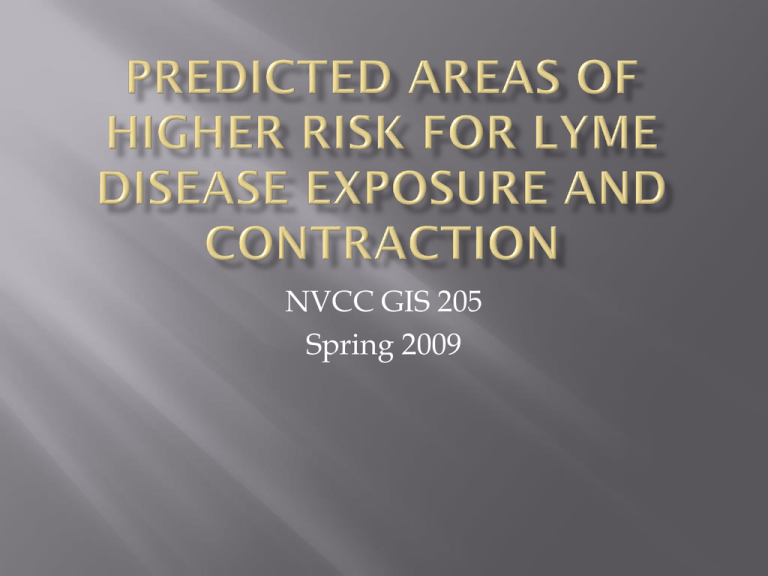
NVCC GIS 205 Spring 2009 About 20,000 reported cases in the USA every year Causes symptoms ranging from rash and fatigue to chronic neurologic problems and arthritis Primarily transmitted in the East by the blacklegged or deer tick (I. scapularis) Nymphs (the most common stage to transmit Lyme disease) are about the size of a poppy seed, inflict a painless bite, and transmit the illness during a 3-5 day long feeding. Age- children ages 5-19 and adults between 45 and 54 years old are at higher risk of contracting Lyme disease Gender- males are more likely to contract Lyme disease than females across all age groups and account for approximately 53-57% of cases overall Exposure- ticks do not travel far on their own, relying on hosts to pass by close enough for them to latch on from their questing site White-tailed deer- a key host for adult blacklegged ticks and several studies suggest a direct correlation between the number of deer and the number of ticks in an area White-footed mice- important host for blacklegged ticks in the larval and nymph stages, White-footed mice are host competent and act as disease concentrators Temperature- black-legged ticks are only active when the temperature is above 35 deg. Fahrenheit Population maps- projected TIGER/LINE data, then calculated the density of individuals 45-54 per area Converted to raster and reclassed based on standard deviations Repeated the process for children and male densities Each layer was weighted according to the proportion of cases that group represents Land cover data was classified by suitablity as habitat for deer and for mice Suitability grids were weighted according to relative contribution to densities of infected ticks Monthly high and low temperature grids were combined to form monthly maps of low, medium, and high tick activity potential Used ___ to form a map of risk of presence of and exposure to infected ticks Used Map Algebra to amplify this by the temporal risk from higher tick activity While my results fit with the research I saw from Maryland, there is very little research on the extent or population of I. scapularis or Lyme disease in Virginia. Likewise, the lack of information about the location of contraction (as opposed to diagnosis) of Lyme limited my ability to analyze the extent to which these predictive factors actually affect Lyme risk.
